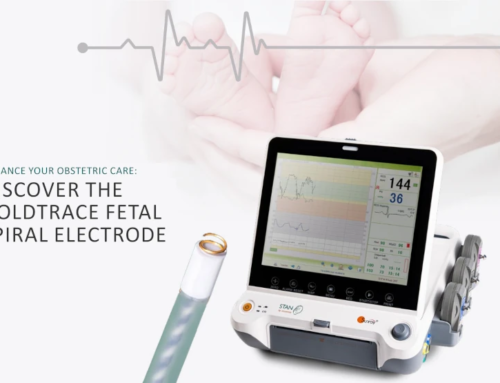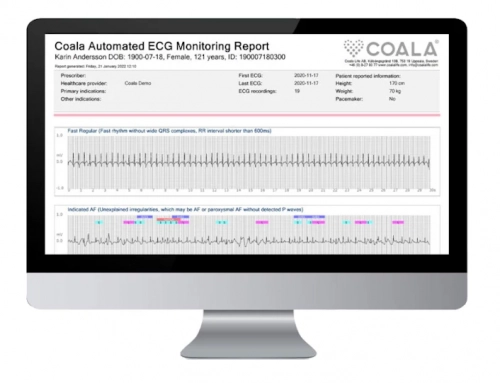Incarta, in partnership with Neoventa, is supporting a national audit on the use of intravenous (IV) fluid boluses during induction of labour (IOL). Led by Dr. Darren Lowen, Staff Specialist Anaesthetist at The Northern Hospital, Victoria, this study aims to examine current practices around IV fluid bolus administration in labour inductions across Australian maternity units.
While fluid boluses are often a routine component of intrapartum care, there are currently no formal guidelines—and limited published data—on their timing, volume, type, or clinical indication (Lowen, Carlon, & Hodgson, 2023; Lowen, Howat, & Hodgson, 2023). This world-first audit aims to capture a national snapshot of how IV bolus therapy is being implemented in practice. By identifying common trends and underlying rationales, the findings will help inform the development of future evidence-based guidelines for maternity care.
Dr. Lowen brings significant expertise in obstetric fluid management, having previously led two national audits exploring IV fluid use during IOL from both obstetric and midwifery perspectives (Lowen, Carlon, & Hodgson, 2023; Lowen, Howat, & Hodgson, 2023). These studies revealed marked variation in practice—both across and within institutions—highlighting the urgent need for more consistent, evidence-informed approaches.
Incarta’s Collaborative Role and Future Impact
Incarta’s Manager of Obstetric Services, Bailey Cohen, is actively coordinating hospital recruitment for the audit, facilitating collaboration across maternity units nationwide. By bringing together obstetricians, midwives, and researchers, Incarta is helping to ensure the audit captures a broad and representative dataset.
This involvement as both a supporter and facilitator reflects Incarta’s commitment to advancing evidence-based maternity care through education, clinical partnership, and sector-wide engagement.
As a collaborative, first-of-its-kind initiative, the project has the potential to shape clinical policies and training frameworks on a national scale. Its findings aim to assist the development of future national clinical guidelines and contribute to safer, more consistent care for women undergoing labour induction.
References
Lowen, D. J., Carlon, N., & Hodgson, R. (2023). A survey of Australian midwifery intravenous fluid management during induction of labour. Collegian. Advance online publication. https://doi.org/10.1016/j.colegn.2023.07.003
Lowen, D. J., Howat, P., & Hodgson, R. (2023). An Australian and Aotearoa New Zealand audit of obstetric fluid management during induction of labor. Journal of Clinical Gynecology and Obstetrics, 12(3), 71–77. https://doi.org/10.14740/jcgo924
Bibliography
Alan, S., Akça, E., Şenoğlu, A., Gozuyesil, E., & Surucu, S. G. (2020). The use of oxytocin by healthcare professionals during labor. Yonago Acta Medica, 63, 214–222.
Australian Institute of Health and Welfare. (2023). National core maternity indicators: Mothers & babies 2021. AIHW. https://www.aihw.gov.au
Bruce, B. R., Leask, J., De Vries, B. S., & Shepherd, H. L. (2023). Midwives’ perspectives of intravenous fluid management and fluid balance documentation in labour: A qualitative reflexive thematic analysis study. Journal of Advanced Nursing, 79, 749–761. https://doi.org/10.1111/jan.15457
Canberra Hospital and Health Services. (2018). Clinical guideline: Induction of labour. ACT Government. https://www.health.act.gov.au/sites/default/files/2020-09/Induction%20of%20Labour.pdf
Chantry, C. J., Nommsen-Rivers, L. A., Peerson, J. M., Cohen, R. J., & Dewey, K. G. (2011). Excess weight loss in first-born breastfed newborns relates to maternal intrapartum fluid balance. Pediatrics, 127(1), e171–e179. https://doi.org/10.1542/peds.2009-2663
Cheek, T. G., Samuels, P., Miller, F., Tobin, M., & Gutsche, B. B. (1996). Normal saline i.v. fluid load decreases uterine activity in active labour. British Journal of Anaesthesia, 77(5), 632–635. https://doi.org/10.1093/bja/77.5.632
Dawood, F., Dowswell, T., & Quenby, S. (2013). Intravenous fluids for reducing the duration of labour in low risk nulliparous women. Cochrane Database of Systematic Reviews, 2013(6), CD007715. https://doi.org/10.1002/14651858.CD007715.pub2
Ehsanipoor, R. M., Saccone, G., Seligman, N. S., Pierce-Williams, R. A., Ciardulli, A., & Berghella, V. (2017). Intravenous fluid rate for reduction of cesarean delivery rate in nulliparous women: A systematic review and meta-analysis. Acta Obstetricia et Gynecologica Scandinavica, 96(7), 804–811. https://doi.org/10.1111/aogs.13135
Flood, M., McDonald, S. J., Pollock, W., Cullinane, F., & Davey, M. A. (2019). Incidence, trends and severity of primary postpartum haemorrhage in Australia: A population-based study using Victorian Perinatal Data Collection data for 764,244 births. Australian and New Zealand Journal of Obstetrics and Gynaecology, 59(2), 228–234. https://doi.org/10.1111/ajo.12926
Harris, P. A., Taylor, R., Minor, B. L., Elliott, V., Fernandez, M., O’Neal, L., … & Duda, S. N. (2019). The REDCap consortium: Building an international community of software platform partners. Journal of Biomedical Informatics, 95, 103208. https://doi.org/10.1016/j.jbi.2019.103208
Harris, P. A., Taylor, R., Thielke, R., Payne, J., Gonzalez, N., & Conde, J. G. (2009). Research electronic data capture (REDCap)—A metadata-driven methodology and workflow process for providing translational research informatics support. Journal of Biomedical Informatics, 42(2), 377–381. https://doi.org/10.1016/j.jbi.2008.08.010
Induction and Augmentation of Labour. (2021). South Australian Perinatal Practice Guideline. Government of South Australia. https://www.sahealth.sa.gov.au
Induction of Labour Policy. (2021). WA Country Health Service. Government of Western Australia. https://www.wacountry.health.wa.gov.au
Kearney, L., Craswell, A., Dick, N., Massey, D., & Nugent, R. (2023). Evidence-based guidelines for intrapartum maternal hydration assessment and management: A scoping review. Birth. https://doi.org/10.1111/birt.12738
Kendrick, J. B., Kaye, A. D., Tong, Y., Belani, K., Urman, R. D., Hoffman, C., & Liu, H. (2019). Goal-directed fluid therapy in the perioperative setting. Journal of Anaesthesiology Clinical Pharmacology, 35(Suppl 1), S29–S34. https://doi.org/10.4103/joacp.JOACP_201_18
Kujawa-Myles, S., Noel-Weiss, J., Dunn, S., Peterson, W. E., & Cotterman, K. J. (2015). Maternal intravenous fluids and postpartum breast changes: A pilot observational study. International Breastfeeding Journal, 10, 18. https://doi.org/10.1186/s13006-015-0042-4
Lind, T. (1983). Fluid balance during labour: A review. Journal of the Royal Society of Medicine, 76(11), 870–875.
Lindstrom, H., Kearney, L., Massey, D., Godsall, G., & Hogan, E. (2018). How midwives manage rapid pre-loading of fluid in women prior to low dose epidurals: A retrospective chart review. Journal of Advanced Nursing, 74, 2588–2595. https://doi.org/10.1111/jan.13788
Maughan, R. J., & Noakes, T. D. (1991). Fluid replacement and exercise stress. Sports Medicine, 12(1), 16–31. https://doi.org/10.2165/00007256-199112010-00003
McDermott, L., Pelecanos, A., Krepska, A., de Jersey, S., Sekar, R., Mao, D., et al. (2022). Single-centre survey of women reflecting on recent experiences and preferences of oral intake during labour. Australian and New Zealand Journal of Obstetrics and Gynaecology, 62(5), 643–649. https://doi.org/10.1111/ajo.13548
Moen, V., Brudin, L., Rundgren, M., & Irestedt, L. (2009). Hyponatremia complicating labour—Rare or unrecognised? A prospective observational study. BJOG: An International Journal of Obstetrics & Gynaecology, 116(4), 552–561. https://doi.org/10.1111/j.1471-0528.2008.02087.x
Newton, N., Newton, M., & Broach, J. (1988). Psychologic, physical, nutritional, and technologic aspects of intravenous infusion during labor. Birth, 15(2), 67–72. https://doi.org/10.1111/j.1523-536X.1988.tb01191.x
Noakes, T. D. (1993). Fluid replacement during exercise. Exercise and Sport Sciences Reviews, 21, 297–330.
Noel-Weiss, J., Woodend, A. K., Peterson, W. E., Gibb, W., & Groll, D. L. (2011). An observational study of associations among maternal fluids during parturition, neonatal output, and breastfed newborn weight loss. International Breastfeeding Journal, 6, 9. https://doi.org/10.1186/1746-4358-6-9
O’Sullivan, G., Liu, B., & Shennan, A. H. (2007). Oral intake during labor. International Anesthesiology Clinics, 45(3), 133–147. https://doi.org/10.1097/AIA.0b013e318074f4a2
Pollack, L. D. (1988). Reconsidering the risks and benefits of intravenous infusion in labor. Birth, 15(2), 80–84. https://doi.org/10.1111/j.1523-536X.1988.tb01193.x
Queensland Clinical Guidelines. (2022). Induction of labour. Queensland Government. https://www.health.qld.gov.au/qcg
Ruchala, P. L., Metheny, N., Essenpreis, H., & Borcherding, K. (2002). Current practice in oxytocin dilution and fluid administration for induction of labor. Journal of Obstetric, Gynecologic & Neonatal Nursing, 31(5), 545–550. https://doi.org/10.1111/j.1552-6909.2002.tb00084.x
Safer Care Victoria. (2018). Induction of labour. Victorian Government. https://www.bettersafercare.vic.gov.au
South Australian Perinatal Practice Guideline. (2018). Oxytocin augmentation and induction of labour infusion. Government of South Australia.
Tarnow-Mordi, W. O., Shaw, J. C., Liu, D., Gardner, D. A., & Flynn, F. V. (1981). Iatrogenic hyponatraemia of the newborn due to maternal fluid overload: A prospective study. British Medical Journal, 283(6292), 639–642. https://doi.org/10.1136/bmj.283.6292.639
Toy, S., & Daly Guris, R. (2023). How to conduct survey-based research. Anaesthesia, 78(7), 902–905. https://doi.org/10.1111/anae.16148
Watson, J., Hodnett, E., Armson, B. A., Davies, B., & Watt-Watson, J. (2012). A randomized controlled trial of the effect of intrapartum intravenous fluid management on breastfed newborn weight loss. Journal of Obstetric, Gynecologic & Neonatal Nursing, 41(1), 24–32. https://doi.org/10.1111/j.1552-6909.2011.01305.x





